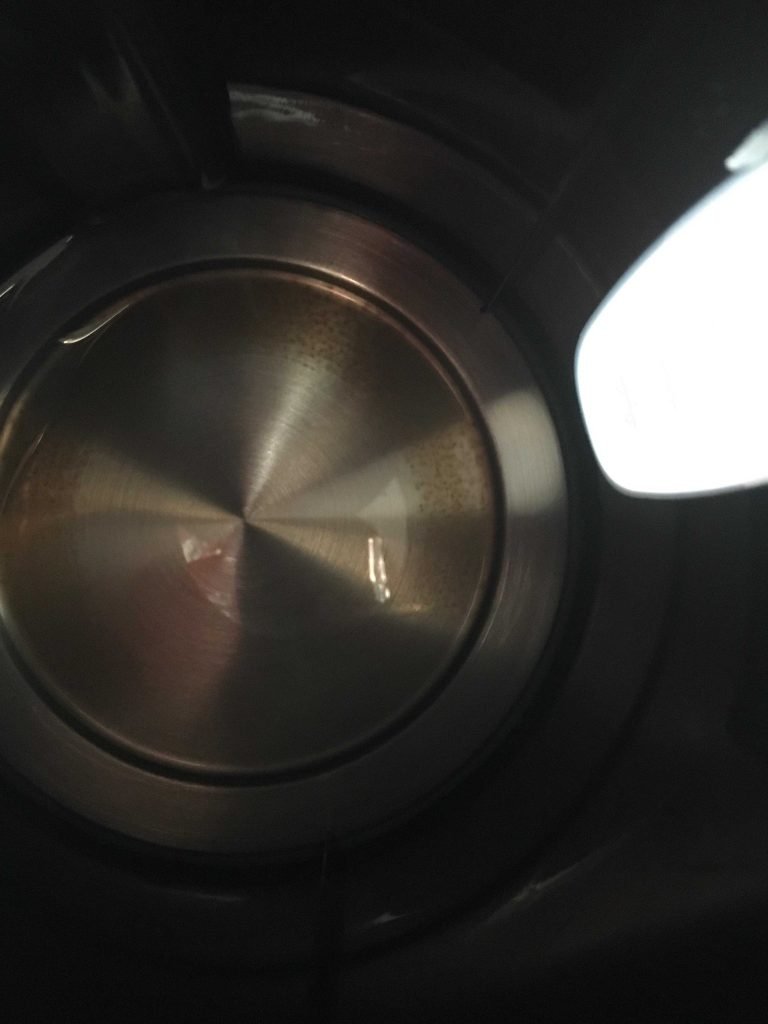To prevent your electric kettle from rusting, regularly clean it with vinegar or lemon juice, keep it dry when not in use, and avoid leaving water inside for extended periods. Using a water softener or descaling agent can also help reduce mineral buildup that fosters rust. With these simple steps, your kettle can stay shiny and rust-free for years to come.
Keeping your electric kettle rust-free is easier than you think! A little routine maintenance and proper care can extend its lifespan and ensure your hot beverages taste perfect every time. Rust not only looks unsightly but can also affect the performance of your kettle, so staying ahead with simple preventative measures is key. By understanding why rust forms and adopting easy cleaning habits, you’ll keep your kettle in top shape without much effort. Whether you’re a tea lover or just want a reliable appliance, maintaining a rust-free kettle is essential to enjoy safe and tasty drinks for a long time.
How to Keep Electric Kettle from Rusting
Understanding Why Electric Kettles Rust
Proper knowledge about why electric kettles rust helps in preventing it effectively. Rust forms mainly because of exposure to moisture and air over time, especially if the kettle isn’t cleaned or maintained properly. Additionally, some kettle materials are more prone to rust than others, such as uncoated metal surfaces.
The Importance of Material Choice
The material your kettle is made of plays a big role in rust formation. Stainless steel kettles are more resistant to rust thanks to their corrosion-resistant properties. Aluminum kettles, on the other hand, can rust if their protective coatings wear off. When purchasing a new kettle, consider models with rust-proof coatings or stainless steel builds.
Regular Cleaning Practices
Keeping your kettle clean is one of the simplest ways to prevent rust. Mineral deposits like limescale can trap moisture and damage protective finishes. Regularly descale your kettle using natural remedies or commercial descaling agents. After cleaning, wipe the kettle dry thoroughly to remove residual moisture.
How Often to Clean Your Kettle
Aim to descale your kettle at least once every month if you have hard water. For softer water regions, every two or three months may suffice. Frequent cleaning ensures mineral buildup doesn’t create weak spots where rust can develop.
Proper Drying Techniques
After cleaning, always dry the interior and exterior of the kettle completely. Use a soft cloth or towel to wipe away any remaining water. Leave the lid open for a few minutes to allow internal air circulation and moisture evaporation.
Use of Protective Coatings and Sealants
Applying a food-safe protective coating or sealant to the kettle’s interior can add an extra layer of defense against moisture. These coatings are available in the market specifically for metal appliances. Follow manufacturer instructions carefully when applying any sealant.
Benefits of Protective Coatings
Protective coatings help prevent moisture from reaching the metal surface, reducing the chances of rust. They are particularly useful for older kettles or models with minor scratches where rust can start.
Proper Storage Conditions
Store your electric kettle in a dry, cool place away from humid environments. Avoid leaving the kettle in damp areas such as the bathroom or near windows where condensation occurs frequently. If not in use for a long time, ensure it is clean and fully dry before storage.
Additional Storage Tips
Cover the kettle with a cloth or store it in a cabinet to limit exposure to moisture. Keep the power cord and plug dry and avoid wrapping the cord tightly around the kettle.
Preventing Rust Through Usage Habits
Be mindful of your usage habits to keep rust at bay. For example, avoid leaving water inside the kettle for long periods. Empty and dry the kettle after each use to minimize the risk of moisture buildup.
Monitoring Water Quality
Using filtered or softened water reduces mineral deposits that can accelerate rust formation. Regularly check water quality and consider installing a water filter if you notice heavy mineral buildup.
Dealing with Existing Rust
If your kettle shows signs of rust, act quickly to remove it. Use a mixture of baking soda and water or vinegar to scrub away rust spots gently. For stubborn rust, commercial rust removers can be effective—just ensure they are safe for use on kitchen appliances.
Steps to Remove Rust Safely
1. Mix a paste of baking soda and water or apply white vinegar directly to rusted areas.
2. Let it sit for about 30 minutes.
3. Use a soft-bristled brush or sponge to scrub away rust.
4. Rinse thoroughly with clean water.
5. Dry completely before reuse or storage.
Routine Inspection and Maintenance
Regularly examine your electric kettle for early signs of rust or damage. Prompt maintenance prevents small problems from turning into widespread rust issues. Replace any worn-out parts immediately to keep your kettle in top shape.
Additional Tips for Rust Prevention
- Avoid using abrasive scrubbers that can scratch protective coatings and expose the metal to moisture.
- Never pour cold water into a hot kettle, as sudden temperature changes can damage coatings and promote rust formation.
- Consider investing in a kettle with a rust-resistant liner or coating for long-term durability.
Related Topics for Better Maintenance
Understanding the importance of water quality, choosing the right kettle, and proper cleaning techniques all contribute to preventing rust. Additionally, learning about descaling methods and storage best practices can extend the life of your appliance.
Summary of Best Practices
| Best Practice | Description |
|---|---|
| Choose rust-resistant materials | Opt for stainless steel or coated kettles to minimize rust risk |
| Regular cleaning | Descale and wipe dry after each use to prevent deposits and moisture |
| Proper drying and storage | Dry completely and store in a dry place away from humidity |
| Use of protective coatings | Apply food-safe sealants to add a barrier against moisture |
| Routine inspections | Look for early rust signs and address problems immediately |
In Conclusion
Protecting your electric kettle from rust involves a combination of choosing the right material, proper cleaning, careful storage, and mindful usage. Regular maintenance and early intervention can keep your kettle in good condition for many years. Implementing these practices ensures your appliance stays rust-free and functions efficiently, saving you money and effort over time.
Cleaning an Electric Kettle: How to Remove Limescale #shorts #youtubeshorts
Frequently Asked Questions
What are effective ways to prevent rust from forming on my electric kettle?
To prevent rust, always dry your kettle thoroughly after each use to eliminate moisture that can cause corrosion. Regularly clean the interior with a mixture of vinegar and water to remove any mineral buildup. Avoid leaving water inside for extended periods, and use filtered or softened water to reduce mineral deposits that contribute to rust formation.
How can I maintain my electric kettle to reduce the risk of rust over time?
Perform routine cleaning by descaling with vinegar or a commercial descaler to prevent mineral buildup. Check the kettle regularly for any signs of corrosion or damage, and address issues immediately. Store the kettle in a dry place when not in use, and avoid exposing it to humidity to help maintain its condition.
Are there specific materials or coatings I should look for to keep my kettle rust-free?
Choose kettles made from stainless steel or glass, as these materials are resistant to rust. Some models feature protective coatings that help prevent corrosion; opt for kettles with such coatings for added durability. Ensure that the interior surface is smooth and free from any scratches that could expose underlying metal to moisture.
Final Thoughts
To keep electric kettle from rusting, regularly rinse it with vinegar or lemon juice to remove mineral buildup. Dry the interior thoroughly after each use to prevent moisture from causing rust. Avoid leaving water inside for extended periods and use soft water when possible.
Proper maintenance and cleaning significantly reduce rust formation, helping your kettle last longer. Following these simple steps ensures your kettle stays in good condition.
In conclusion, knowing how to keep electric kettle from rusting allows you to maintain its efficiency and longevity. Regular care and attention are key to preventing rust and keeping your kettle functional.
As an Amazon Associate, We earn from qualifying purchases. When you purchase a product through Amazon links on kitchenadvising.com, we may earn a small commission at no extra cost to you. This helps support the site and keep our content free.


